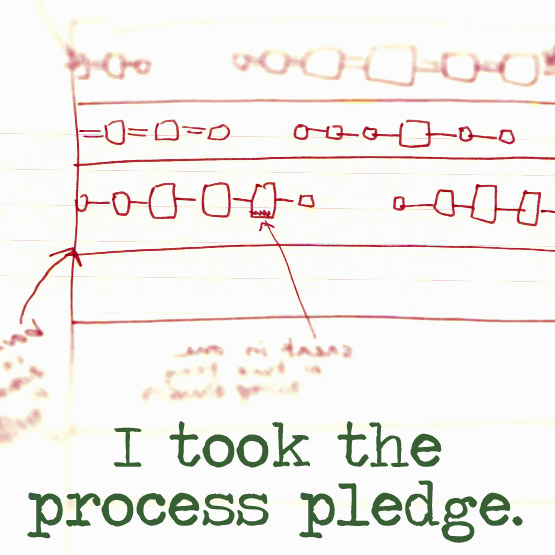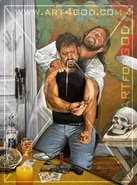

 I'm sure you all think I've fallen off the planet, but I'm still here. And I'm still working on that Stars Fell on Alabama quilt. It's the sewing of the binding that I'm having trouble with. In case you can't tell, I absolutely REEK at hand sewing. Apparently, there's a technique I'm not aware of.
I'm sure you all think I've fallen off the planet, but I'm still here. And I'm still working on that Stars Fell on Alabama quilt. It's the sewing of the binding that I'm having trouble with. In case you can't tell, I absolutely REEK at hand sewing. Apparently, there's a technique I'm not aware of. I've searched the net for how-to's on the subject, even watched video tutorials. Either I'm so blind that I can't see the stitches they are presenting, or I'm terribly uncoordinated. My choice of binding fabric was hard to match because it's variegated. So, I went with the most prominent color: blue. I won't even start on how sore my index finger is from doing this.
You can see from this picture here that this is where I started. I'm definitely ripping this out.
So, I pose the question to you all: how do you do an invisible stitch? I'm thinking it's alot like the applique stitch, but I've only done machine applique.
Any help is greatly appreciated!















9 comments:
Yes. Applique your binding on! :-) Try different threads too. White, ecru, various shades of grey, pale green and see what shows least. Why does your finger hurt? No thimble? Too small a needle?
I cut my binding 2 1/4 inches and fold it in half to sew on with the machine but never iron that fold. Then for the hand sewing part I do basically a ladder stitch. Tunnel under the backing fabric then come up and tunnel through the folded edge of the binding (hence the not ironing that fold flat). Then go back and tunnel in the backing. If you go directly up and down between the binding and the backing your stitches should be invisible!
Oh! And I don't pin or clip either, except at the corners. The doggone pins and clips just get in the way. :-)
Hang in there! :-)
Katie's method is basically what I use when I do handsew a binding (which I only do for competition quilts). For 99% of my quilts, I sew the binding on totally by machine. To Do that, you need to sew it to the backside first and then bring it around to the front and topstitch very neatly along the front binding's edge. It will leave a nice line on the back right along the back edge of the binding.
My rationale is twofold: Life is short; get on with it. And, handsewn bindings have a tendency to come out when you use a quilt alot so skip the aggravation and do it by machine. The rest of the quilt is machine sewn so why not the binding?
I use a grey silk applique thread. It seems to merge in with all fabrics so it's invisible.
Also when you hand sew an applique stitch all the travelling is done underneath the binding. Yo come out of the quilt and pick a thread or two of the binding fabric and then go back through the same hole in the quilt. That way the stitch becomes invisible. Does that make sense? If you want photos to help ith the explanation just yell and I'll do something on my blog for you.
Love and hugs Gina xxx
HI Beth! I put some comments in a post on my blog. I hope that they are helpful.
I really like to use silk thread for sewing my bindings. It literally disappears...
I'm new to this but one thing I found helpful was using straw needles. They bend very easily and help me just catch 2 threads or so of fabric.
I'd also suggest using a different color thread, the blue seems to pop against the white.
Your pup is totally adorable!
I'Ll show you the stitch when I get back off vacation if you want. They make invisible thread, which is probably what you need to use. You should use a thimble also to push the needle through. If you don't like the metal ones they do make leather ones, which is what I started with. We're having a relaxing time in Colorado. I'll show you pics when we get home.
Lee
Ladder stitch works but here's a really easy stitch (yes, it is an applique stitch!). Bring your needle out in the fold of the binding, pull the thread all out, put the needle into the backing of the quilt directly across from where the thread came out, now slant the needle and came out again in the fold of the binding.
The trick to keeping the stitch small is to not move diagonally (like I can see you did in the pix) on the outside where you can see the stitch.
Hopes this helps.
Post a Comment